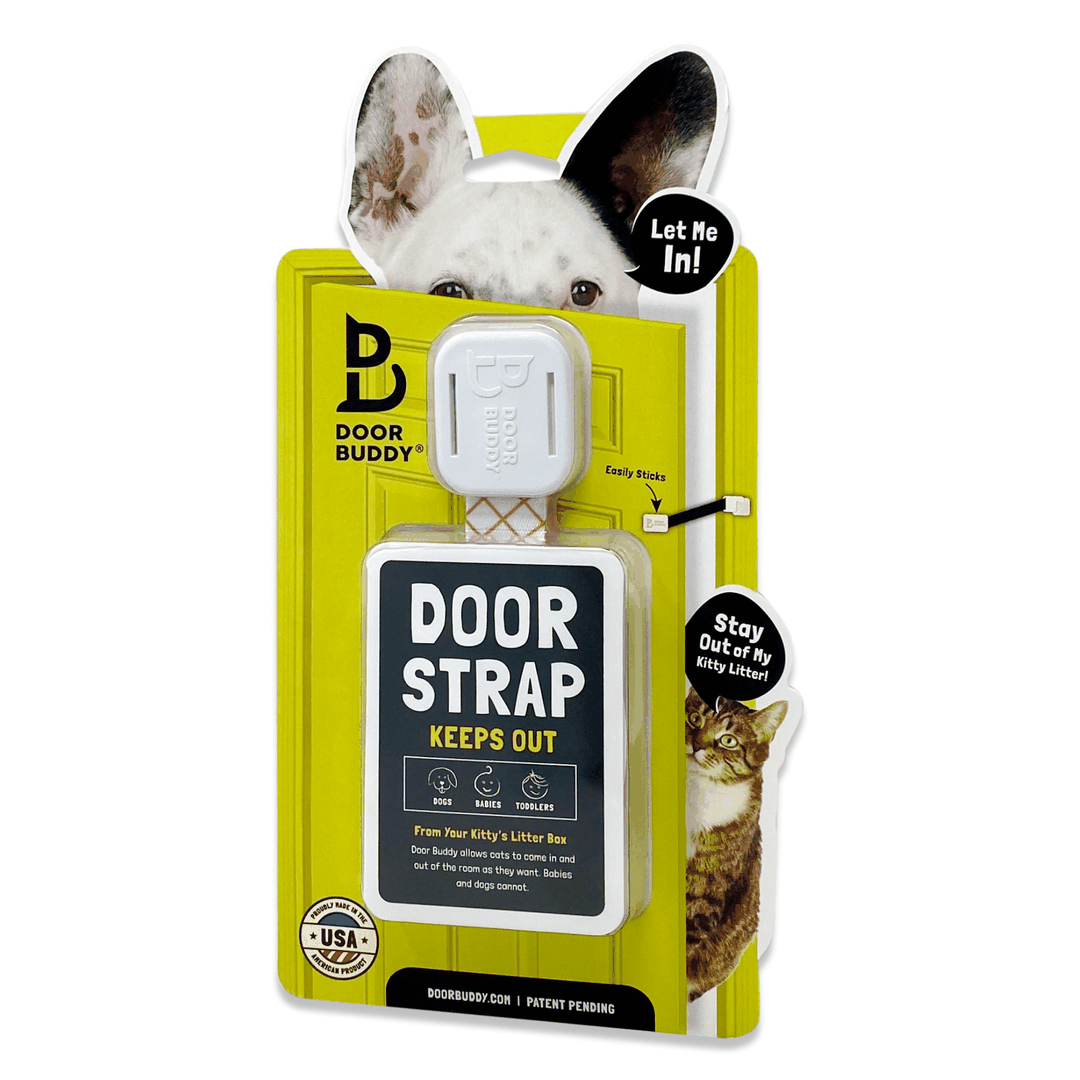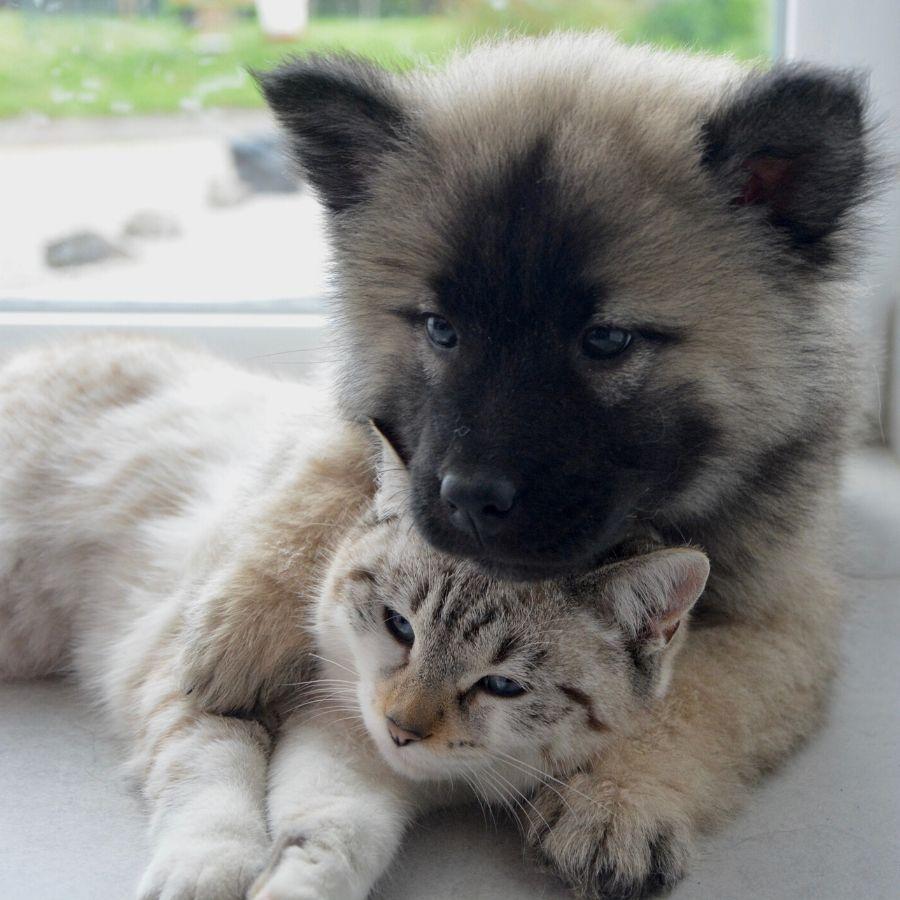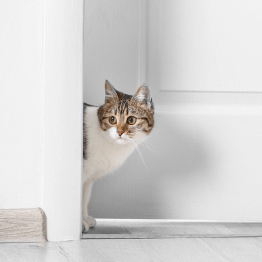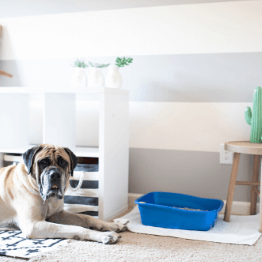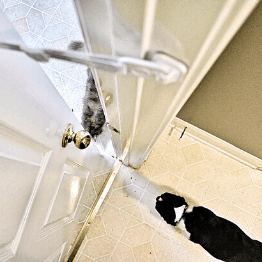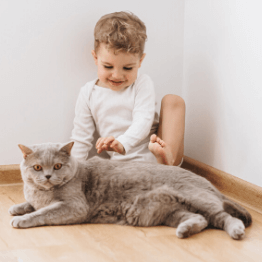HOW TO INTRODUCE A DOG TO A CAT
Dogs and cats together: is there anything more purrrfect to think of? Before making any concrete expansion plans, it’s key to understand how to introduce a dog to a cat properly. If you’re a feline-friendly home that’s looking to bring a doggo into the mix, then this article is for you!
Bringing a cuddly canine to your territorial feline companion can be tricky. Learning how to introduce a dog to a cat is based on one crucial element: patience! Our cute cats can be fairly set in their ways, and bringing in a new member to your home can be very disruptive.
Then, of course, there are many other factors to consider. This includes the respective age and personality of your existing cat and your potential new dog.
Despite your best attempts at match-making, bringing in a newcomer without warning could be extremely stressful and even potentially dangerous for your kitty. A dog can injure a cornered cat very quickly.
That being said, it’s not an impossible dream. Many homes enjoy the company of both cats and dogs within its bounds - paws up for success stories!
If you decide to introduce a dog to a cat, take our word for it and prepare in advance. The process may take anything from a few weeks to a few months! But don’t let that get you down. We’re here to help you with our how to introduce pets tips.
HOW TO INTRODUCE A DOG TO A CAT: STEP BY STEP
Step 1: Secure Your Cat’s Sanctuary
The first step before bringing home a new pup or even an older, socialized doggo is to secure your cat’s sanctuary.
As you may already know, cats love their own spaces, especially in times of change. When they’re feeling a little insecure, you may even find them on top of bookshelves or on other high surfaces. For this reason, it’s best to create a sanctuary that’s easily accessible for your kitty.
But this alone won’t be enough when you bring home a new dog, so you’ll want to also provide a safe space for litter and kitty food. It may not be as simple as closing your cat in a room – remember that your cat doesn’t like to feel trapped, either!
A good compromise that will keep the new dog out but still allow your cat free entry and exit is by fitting an adjustable strap to the kitty sanctuary door. Door Buddy is an easy-to-install latch with an adjustable strap that will give your cat access to rooms while keeping the dog out. It’s a pet proofing must have!
Step 2: Secure the New Dog Zone
Once you’ve secured your cat’s sanctuary, choose another room that will be your new dog’s first stopping place for a while before being given free rein of the house. Here they will be able to get settled and comfortable with their new surroundings. This is an im-paw-tant part of the process when you introduce dog and cat.
If you really want to make your pooch feel at home, fill up this space with some of their favorite things. Dogs love a luxurious bed and exciting new toys to keep them entertained.
Step 3: Swap Scents
When these new rooms have been established, it’s time to start slowly introducing your furbabies. A large part of how to introduce pets is getting them to know each other’s scents.
While tucking your purrrfect pals in bed, make sure to include a cuddly blanket. This will come in handy when you start to swap scents between the two future furbesties. Let your cat and dog get familiar with each other’s scents through the blankets before introducing them face-to-face. By doing so, it won’t come as a surprise when they finally meet.
Step 4: Meeting in a Neutral Zone
Once their own safe zones are established, you can supervise a short introduction in a neutral area. Quickly reinforce any positive interaction with a treat for each of them. Don’t be tempted to shout or punish either of them, as this will add to the stress and chaos! Remember, slow and steady wins the race.
Try and remain calm at all times. This will help make sure the neutral territory is quiet and do your best to ensure that your cat has a clear escape route.
Unfurtunately, these initial meetings can’t go unsupervised either. Always stay present during these meetings and keep it short. Over a few days or weeks, slowly increase the length of these supervised visits.
Step 5: Encourage Daily Meetings
They say practice makes purrrfect and getting dogs and cats together is no different! These introducing dogs tips see the most success when done daily. By slowly encouraging regular meetings, your pets will feel more comfortable with each sighting. So, when we say to practice patience, we mean it!
Step 6: Proceed with Caution
Once you’ve done your rounds of regular rendezvous’, your pets should feel better acquainted. However, this doesn’t mean that you have the green light on having a happy fur-household.
While it’s important to give your pet’s independence, it’s highly recommended to keep an eye on them when they interact with each other. As cats can be relatively fickle and dogs are known to get overly excited, a cat-ostrophe can happen at the hint of a meow! For the first few weeks, supervised visits are essential.
When it comes to introducing dogs, both of your fur babies will pick up on your calm and positive vibes. The more relaxed you are, the smoother the introduction will be. Even if you’re feeling frustrated in learning how to introduce a dog to a cat, the benefits will last you a lifetime! Once your pets are furends, they may start playing. If you're struggling to tell whether they are actually playing or fighting, read this blog.
If you're a parent as well as a pawrent, then we think you'll love this post on how to keep baby out of the litter box.
“Patience is not the ability to wait, but the ability to keep a good attitude while waiting.”


